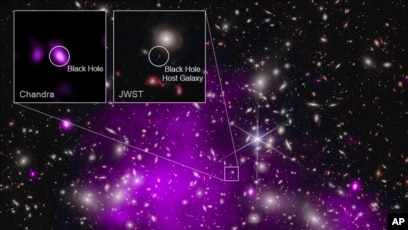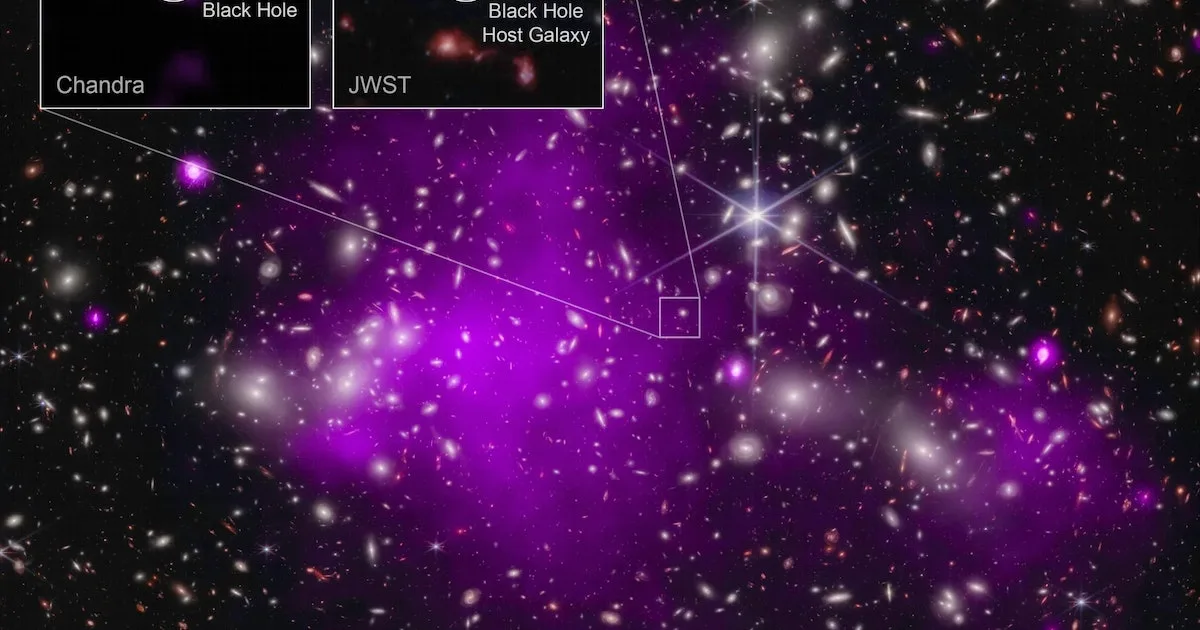Scientists have discovered the oldest black hole dating back to 470 million years after the Big Bang
Scientists have discovered the oldest black hole dating back to 470 million years after the Big Bang. This black hole is about 13.2 billion years old, as the universe itself is 13.7 billion years old.
NASA’s James Webb Space Telescope and Chandra X-Ray Observatory were used to make observations with the gravitational lensing technique in the galaxy named UHZ1.
- Gravitational Lensing occurs when massive objects distort and magnify light from objects behind them, acting as cosmic telescopes and making distant galaxies appear brighter.

About Black hole in galaxy UHZ1
- It is a supermassive black hole almost ten times bigger than black hole (Sagittarius A*) in our galaxy.
- It weighs anywhere from 10% to 100% of the mass of all the stars in its galaxy.
- It is considered a quasar since it’s actively growing and the gas is very bright.
- Black hole is a place in space where gravity pulls so much that even light cannot get out.
- They are formed when massive stars die or there is a direct collapse of gases.
Significance of studying black hole
- To understand how matter behaves in extremely strong gravitational fields
- To understand how fast the universe is expanding and how it has evolved.
Telescope related to Black Hole
- Chandra X-Ray Observatory: It is a telescope deployed in 1999 and designed to observe X-rays from high-energy regions of the universe, such as the remnants of exploded stars.
- James Webb Telescope: Launched in 2021 in the second Lagrange point or L2 (1 million miles away from the Earth). It is the most powerful astronomical observatory ever sent into space, it sees the universe in the infrared.
